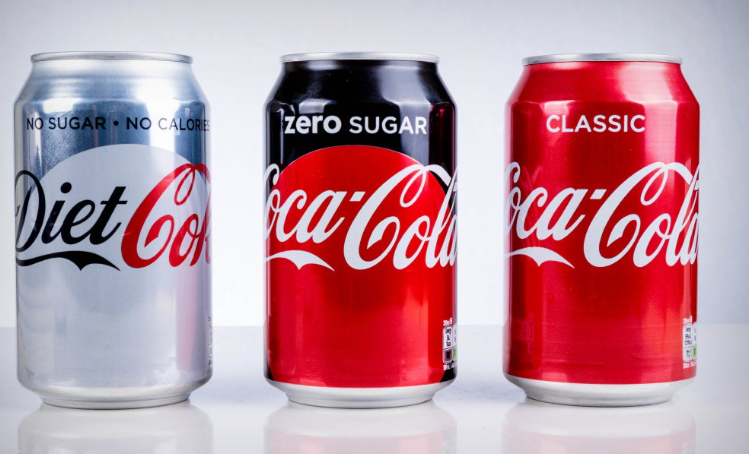
Do Diet Coke have the same ingredients and same flavor? You might be surprised. This article will compare these two popular beverages to clarify their distinct characteristics and appeal.
1. Flavor Profile
Coke Zero was created to mimic the classic Coca-Cola flavor as closely as possible without the sugar and calories. The technology and sweeteners used aim to make Coke Zero taste more like the original Coca-Cola. This is particularly appealing to those who prefer Coca-Cola’s taste but want to avoid the sugar and calories.
Diet Coke, on the other hand, has a different flavor profile. It was introduced in 1982 and marketed as a lighter option to Coca-Cola. Diet Coke has a distinct taste that loyal consumers can distinguish from the original Coca-Cola. This difference in flavor comes from the different blend of flavors used in its recipe.
2. Target Audience
Both beverages are targeted at consumers looking for a low-calorie, zero-sugar Coke experience, but the intended audiences do vary slightly. Coke Zero appears to target consumers who desire the full-flavor experience of Coca-Cola without the associated sugar and calories, potentially including a younger demographic and males who might not have been fully captured by Diet Coke’s marketing initiatives.
Diet Coke has been associated historically with female consumers and often features branding that appeals to audiences looking for a light and refreshing diet-oriented beverage. However, it is important to note that both drinks have broad appeal and are consumed by all demographics.
3. Sweetener Composition

One main difference between Coke Zero and Diet Coke is in the sweeteners used in their formulations. Coke Zero typically uses a combination of aspartame and acesulfame potassium (Ace-K) to create its sweet taste without calories. This combination of sweeteners is one of the factors that allows Coke Zero to achieve a taste closer to that of regular Coca-Cola.
However, Diet Coke primarily uses aspartame as its sweetener. The lack of Ace-K in Diet Coke might contribute to its lighter and different taste profile compared to Coke Zero and the original Coca-Cola.
4. Ingredient List
When examining the ingredient list, one will notice that Coke Zero and Diet Coke share several ingredients, including carbonated water, caramel color, phosphoric acid, natural flavors, and caffeine. However, the order of these ingredients and the specific natural flavors used can vary, leading to the distinct taste profiles of each drink.
Coke Zero usually lists its sweetener blend before the caramel color, indicating a greater proportion relative to other ingredients, which contributes to its richer taste. Diet Coke lists its caramel color before the sweetener, which may indicate a different emphasis in the recipe formulation.
5. Branding and Packaging
Brand identity is another area where Coke Zero and Diet Coke diverge. Coke Zero has been rebranded as Coca-Cola Zero Sugar in many markets to reinforce the message that it provides Coca-Cola taste with zero sugar. Its packaging tends to be more similar to that of classic Coca-Cola, often using a similar font and red disc on a black background.
Diet Coke presents itself with a more distinct branding. Its silver can with red lettering and a colorful vertical stripe distinguishes it from the classic Coca-Cola look. The brand often introduces various limited-edition flavors and designs, underlining its unique and evolving identity separate from the classic Coca-Cola.


















